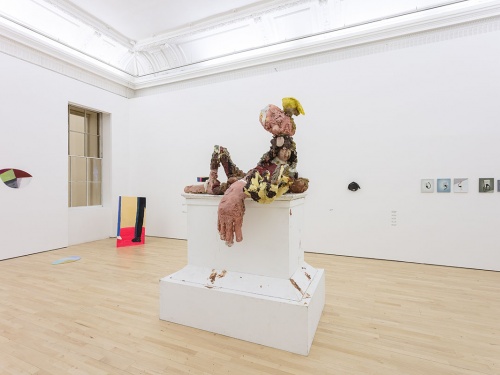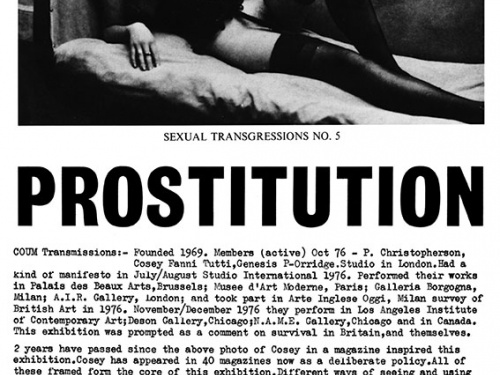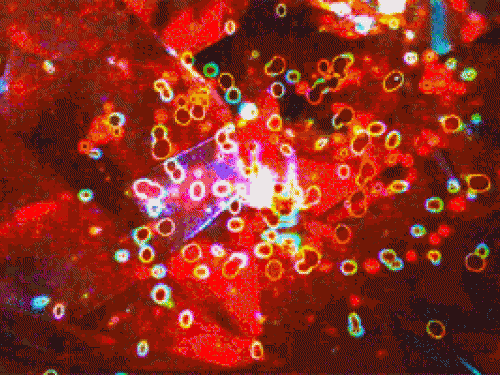ICA Off-Site: A Journey Through London Subculture: 1980s to Now
ICA Executive Director Gregor Muir introduces our new Off-Site project at The Old Selfridges Hotel, A Journey Through London Subculture: 1980s to Now.
This is not an exhibition, as such, but a project. Better still, an experiment whereby the ICA seeks to test the existence of an interconnected legacy that can be traced back to the 1980s and beyond. To conduct this experiment we’ve created an environment at The Old Selfridges Hotel that charts a series of cultural events that have occurred in London over the past thirty years. Our exploration starts with a handful of photographs of the craft collective The House of Beauty and Culture trawling the banks of the River Thames in search of old bones, bottle tops and clay pipes to transform into fashion accessories or sew into handmade clothing. These rarely seen images capture the spirit of the post-punk DIY aesthetic at a time when scrap metal and the contents of skips were being reworked into contemporary objects by designers such as Tom Dixon and those associated with Creative Salvage.
Taken in the shadow of Derek Jarman’s former Bankside studio, an area more recently associated with Tate Modern, Nicola Tyson’s photographs feature stylist and accessory designer Judy Blame, shoe designer John Moore and graphic designer Fiona Skinner. Having set up shop in Stamford Road, Dalston, The House of Beauty and Culture existed from 1986 - 1989, becoming synonymous with the designs of Blame and Moore, alongside fellow members Dave Baby, Fiona Bowen, John Flett, Peter Foster, Mark Lebon, Christopher Nemeth, Alan Macdonald & Fritz Solomon (Fric & Frack), and Richard Torry.
This project seeks to make connections between London’s artistic past and the present day. For instance, is there a connection between The House of Beauty and Culture and The Shop, an artist-run store by Sarah Lucas and Tracey Emin? Does the adhocism of 80s DIY culture and early YBA extend to the reassembled chairs of Martino Gamper or the designs of Bethan Laura Wood? Can we trace the social influence of former nightclubs to artist collective LuckyPDF or venues like Vogue Fabrics? Does Iain R Webb’s styling for BLITZ magazine relate to the collections of J.W.Anderson or Louise Gray? Is it possible to trace a connection from random warehouse parties to high art? This is what we’re about to find out.
Deploying over fifty vitrines, alongside video works, installations and billboard-sized images, a single thread - one of many possibilities - weaves its way from a scene on the Thames riverbank to now, representing a core sample of London’s creative culture, be it an attitude or approach that is arguably found in this city more than any other. As you enter the raw industrial space of the former Selfridges Hotel, what you see around you are the dots that we seek to join. Taking examples from art, fashion, design, architecture and dance, as well as nightclubs, restaurants and bars, we ultimately aim to illustrate a lineage of artistic endeavour that more often than not falls outside the preserve of commercial galleries and museums (the ICA’s concern being to develop the space between the two).
The timeline set by this project spans the moment when 80s counterculture would arguably enter the mainstream and the London underground scene, ravaged by AIDS, would eventually be co-opted by the rising tide of commercialisation and conspicuous consumption. Or was it? In illustrating the path taken by London’s alternative scene, the following questions remain: Does counterculture still exist? Do younger artists subscribe to a similar desire to make something out of nothing? Is there a commonality between younger generations of emerging artists and their countercultural parents? For some, there will be obvious omissions from the timeline, but this is not intended to be an all-inclusive show with a predetermined thesis. In the absence of an exhaustive survey it provocatively asks, who else would you include and why? Like you, we intend to use this project to unearth new discoveries and bring our findings back to our base on The Mall. By setting ourselves this challenge, we aim to better understand the concerns of young artists while looking to the future.
Gregor Muir
ICA Executive Director
ICA Off-Site: A Journey Through London Subculture: 1980s to Now
13 September - 20 October 2013
The Old Selfridges Hotel
1 Orchard Street, W1H 6JS
Free entry
This article is posted in: Articles, Blog, Exhibitions, News
Tagged with: Counterculture, exhibition, Gregor Muir, ICA, Institute of Contemporary Arts, London, Selfridges





